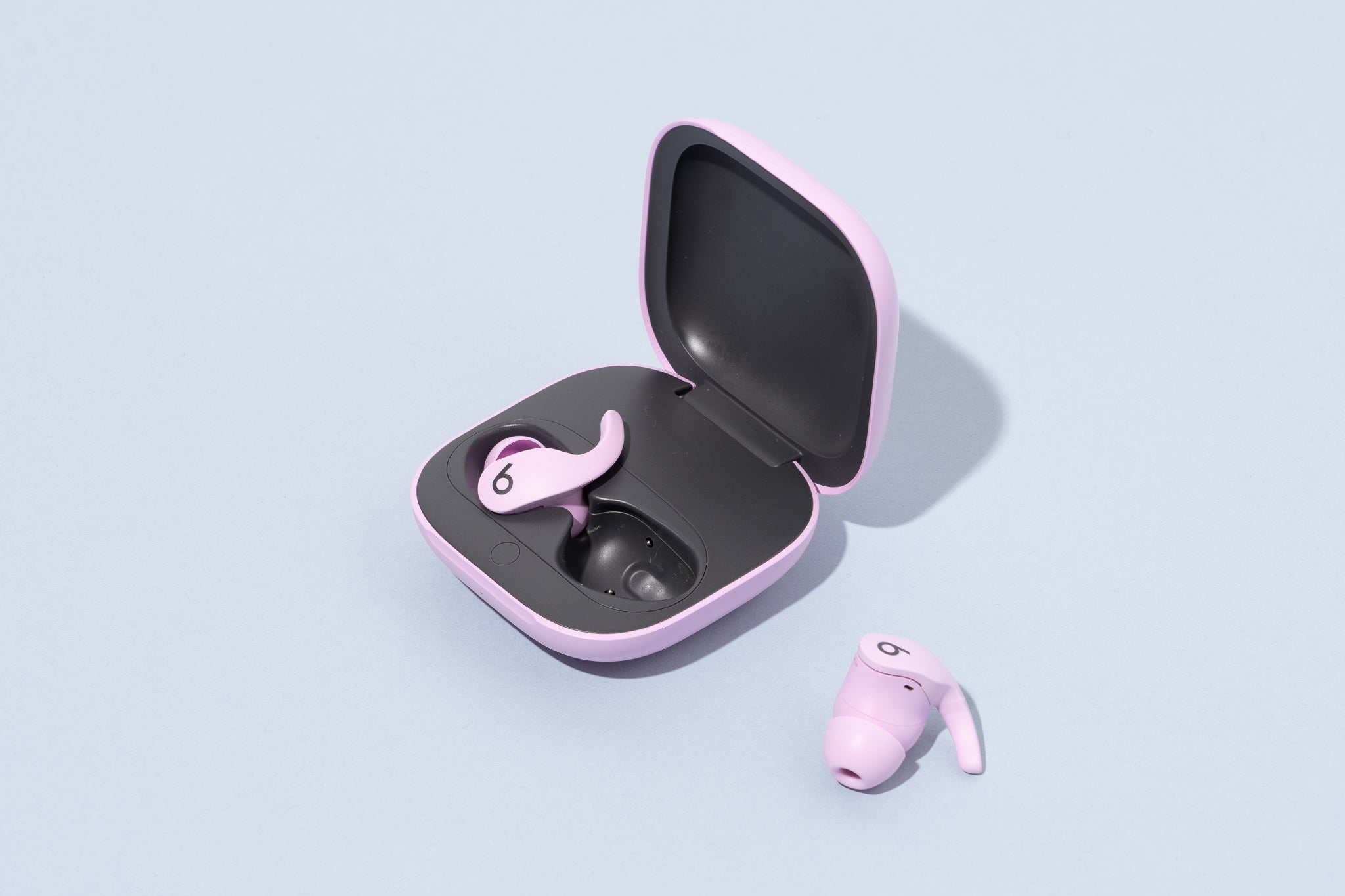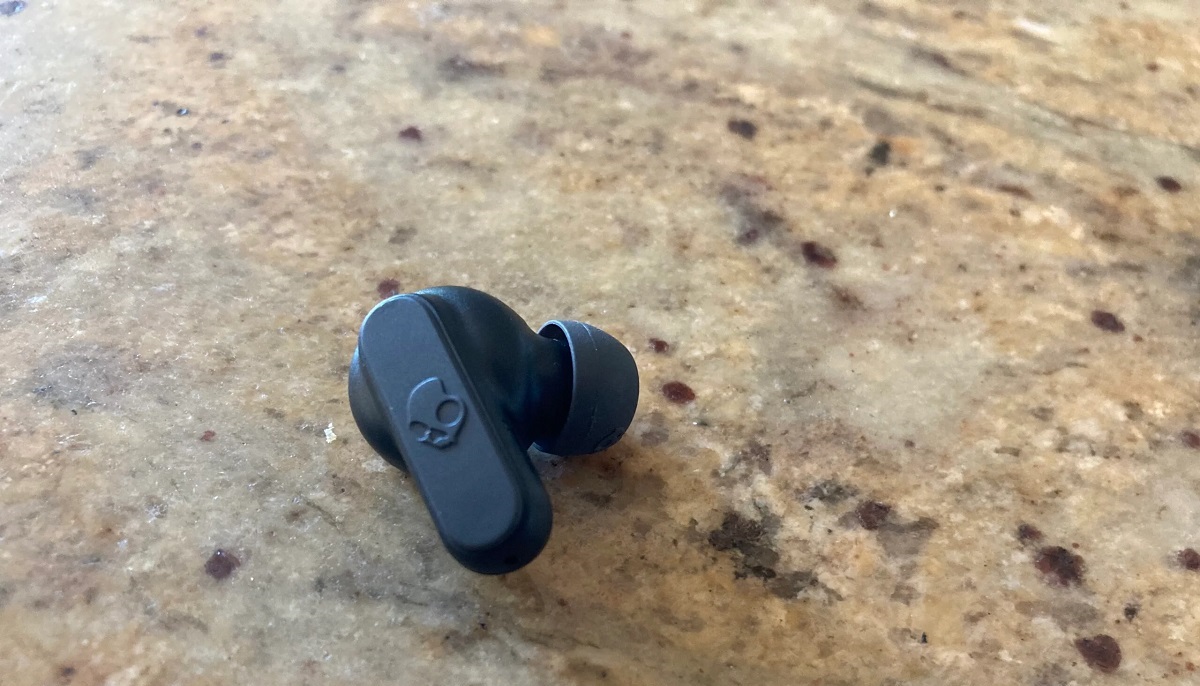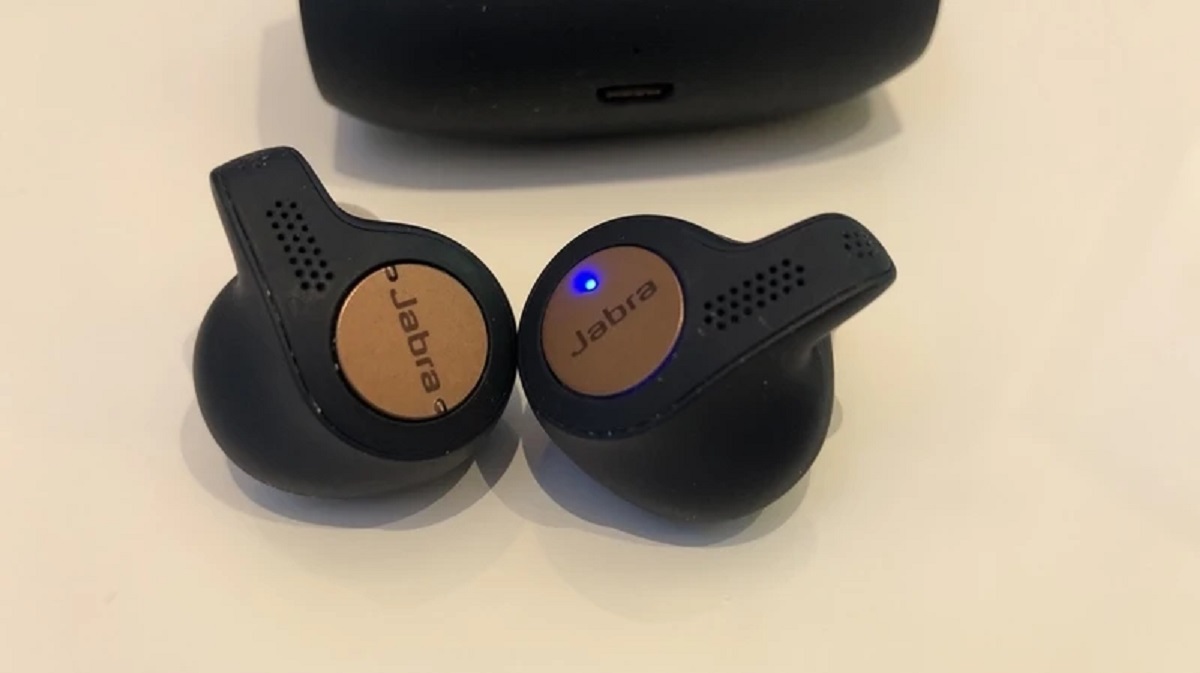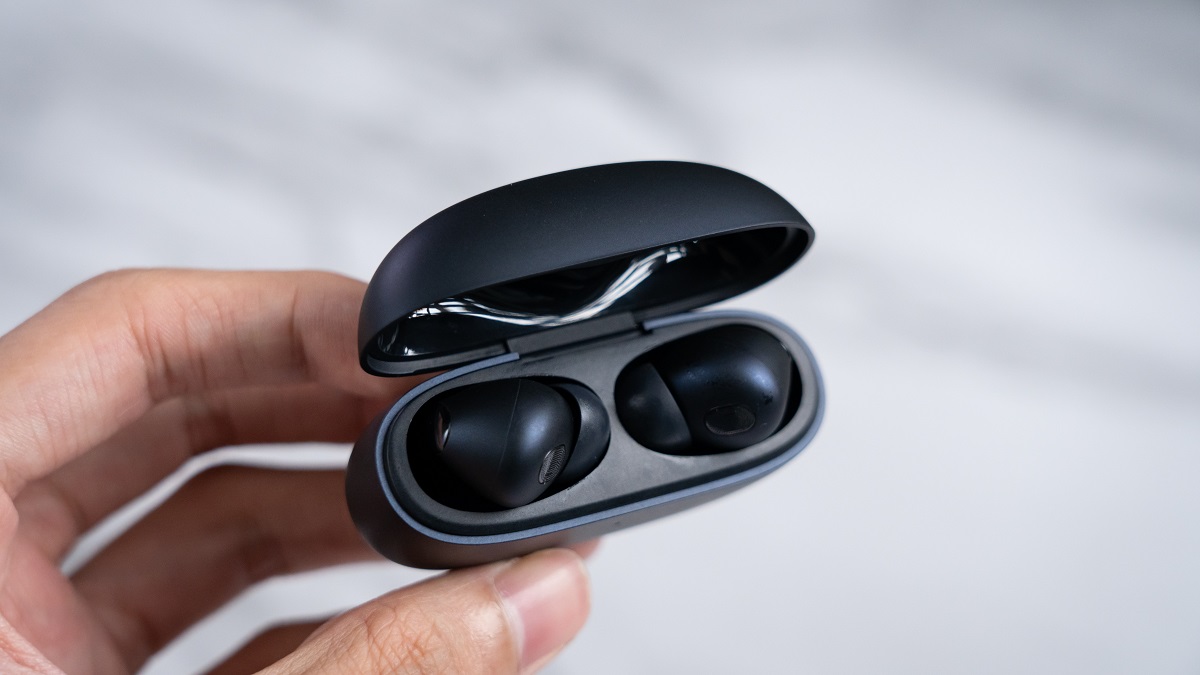Introduction
In the era of wireless technology, we have seen remarkable advancements in various electronic devices. One such innovation that has revolutionized the way we listen to music or make phone calls is wireless earbuds. These tiny yet powerful devices offer the freedom to move around without the hassle of tangled wires.
Wireless earbuds have gained immense popularity due to their convenience, portability, and stylish design. With the advancement of Bluetooth technology, they offer seamless connectivity to our smartphones, tablets, and other devices. But have you ever wondered how far these wireless earbuds can actually reach?
In this article, we will delve into the world of wireless earbuds to understand their range and connectivity capabilities. We will explore the factors that affect their range and the various classifications of wireless earbuds based on their reach. Additionally, we will provide you with some useful tips to extend the range of your wireless earbuds.
So, if you’re curious about the limitations and possibilities of wireless earbuds in terms of distance, sit back, relax, and let’s dive in!
Understanding Wireless Earbuds
Before we explore the range capabilities of wireless earbuds, let’s first understand what exactly wireless earbuds are. Wireless earbuds, also known as Bluetooth earbuds or TWS (True Wireless Stereo) earbuds, are a type of headphones that do not require any physical connection to the audio source device.
Unlike traditional wired earphones, wireless earbuds use Bluetooth technology to establish a wireless connection with your smartphone, tablet, or other compatible devices. This means that you can enjoy your favorite music or take calls without being tethered by wires.
Most wireless earbuds come in a compact and lightweight design, making them comfortable to wear for long periods. They usually come with a charging case that not only protects the earbuds but also serves as a portable charger. This allows you to recharge your earbuds on the go, ensuring that you never run out of battery.
Moreover, wireless earbuds offer several additional features such as touch controls, built-in microphones for hands-free calling, noise cancellation, and even water resistance. These features vary depending on the brand and model, allowing you to choose the one that best suits your needs.
Another important aspect to consider when it comes to wireless earbuds is the audio quality. While some earbuds prioritize portability and convenience, others focus on delivering superior sound performance. It’s essential to choose earbuds that strike a balance between audio quality and convenience, ensuring that you enjoy an immersive and enjoyable listening experience.
Overall, wireless earbuds have become a popular choice for music enthusiasts, fitness enthusiasts, professionals, and anyone who wants the freedom to listen to audio without the hassle of wires. Now that we understand the basics of wireless earbuds, let’s move on to explore their range capabilities and connectivity options.
Bluetooth Range and Connectivity
Bluetooth is the wireless technology that enables communication between wireless earbuds and other devices. It operates on radio waves within a specific frequency range and allows for seamless audio streaming, phone calls, and other data transmissions.
When it comes to wireless earbuds, the Bluetooth range plays a crucial role in determining how far you can stray from your audio source device without experiencing interruptions or audio dropouts. The Bluetooth range is the maximum distance at which the earbuds can maintain a stable connection with the audio source.
The Bluetooth range can vary depending on several factors, including the Bluetooth version supported by the earbuds and the audio source device. The most common Bluetooth versions found in wireless earbuds are Bluetooth 4.2, 5.0, and the latest Bluetooth 5.2, each with its own advancements in terms of range and connectivity.
Bluetooth 4.2 offers a range of approximately 100 feet (30 meters) in open spaces, while Bluetooth 5.0 extends the range up to 800 feet (240 meters) in optimal conditions. The latest Bluetooth 5.2 further enhances the range and offers more stable connectivity, allowing for seamless audio transmission even in crowded environments.
In terms of connectivity, wireless earbuds utilize a pairing process to establish a connection with the audio source device. The pairing process involves putting the earbuds into pairing mode and then selecting the earbuds from the Bluetooth settings of the audio source device.
Once paired, the earbuds remember the connection and automatically connect to the audio source device when in range. This eliminates the need for manual re-pairing each time you want to use the earbuds.
However, it’s important to note that Bluetooth connectivity can be affected by obstacles such as walls, furniture, or other electronic devices that may interfere with the signal. Therefore, it’s recommended to stay within a reasonable range from the audio source device to maintain a stable connection.
Now that we have a basic understanding of Bluetooth range and connectivity, let’s dig deeper into the factors that can affect the range of wireless earbuds.
Factors That Affect Wireless Earbud Range
While the Bluetooth range mentioned earlier gives us an idea of how far wireless earbuds can reach, it’s important to understand that various factors can affect their actual range. These factors include:
1. Obstacles: Obstacles such as walls, furniture, or other objects can obstruct the Bluetooth signal and reduce the effective range of wireless earbuds. The more obstacles between the earbuds and the audio source device, the shorter the range will be.
2. Interference: Other electronic devices operating on similar frequencies, such as Wi-Fi routers, microwave ovens, or cordless phones, can interfere with the Bluetooth signal, leading to a decrease in range and possible audio interruptions.
3. Battery Level: The battery level of both the wireless earbuds and the audio source device can impact the range. As the battery drains, the signal strength may weaken, resulting in a decrease in range.
4. Manufacturer Design: The design and technology implementation by different manufacturers can affect the range of wireless earbuds. Some manufacturers may prioritize range, while others may focus more on other features.
5. Signal Quality: The quality of the Bluetooth signal transmitted by the audio source device can also impact the range of wireless earbuds. A stronger and more stable signal will result in a greater range.
6. Environmental Conditions: Environmental factors such as weather conditions and electromagnetic interference in crowded areas can affect the range of wireless earbuds. For example, using the earbuds outdoors may yield a longer range compared to using them indoors with multiple walls.
It’s essential to consider these factors when using wireless earbuds to ensure optimal performance and range. By understanding these variables, you can make informed decisions about the placement of your audio source device and the usage of your wireless earbuds.
Classifications of Wireless Earbuds Range
Wireless earbuds can be classified into different categories based on their range capabilities. While individual earbud models may vary, these classifications provide a general idea of the range you can expect from each category:
1. Short-Range Wireless Earbuds: Short-range wireless earbuds typically have a range of up to 33 feet (10 meters). They are ideal for use in a close proximity to the audio source device. These earbuds are well-suited for activities like workouts, commuting, or working in the same room as the audio source.
2. Medium-Range Wireless Earbuds: Medium-range wireless earbuds offer a range of around 33 to 66 feet (10 to 20 meters). They provide a bit more freedom to move around and are suitable for larger indoor spaces or outdoor environments with fewer obstacles.
3. Long-Range Wireless Earbuds: Long-range wireless earbuds boast a range of up to 100 feet (30 meters) or more. These earbuds allow you to roam around a larger area without losing connection or experiencing audio drops. They are especially useful for activities like outdoor workouts, gardening, or moving around in a spacious environment.
It’s important to note that these classifications are approximate ranges, and the actual range may vary depending on the factors mentioned earlier. Additionally, advancements in Bluetooth technology and improvements in antenna design can result in earbuds with longer range capabilities.
When choosing wireless earbuds, consider your specific needs and usage scenarios to determine which range classification suits you best. If you often find yourself in close proximity to your audio source device, short or medium-range earbuds may be sufficient. However, if you require more freedom and a wider range of movement, long-range earbuds may be the better choice.
Now that we have explored the classifications of wireless earbuds based on their range, let’s move on to discuss some practical tips to extend the range of your wireless earbuds.
Short-Range Wireless Earbuds
Short-range wireless earbuds are designed to provide seamless audio connectivity in close proximity to the audio source device, typically within a range of up to 33 feet (10 meters). While they may not offer the same level of range as medium or long-range earbuds, they are still versatile and convenient for various everyday activities.
Short-range wireless earbuds are well-suited for workouts, commuting, or working in the same room as the audio source. They allow you to enjoy your favorite music or take calls without being tethered by wires, providing freedom of movement within a limited range.
These earbuds are compact and lightweight, making them comfortable to wear for long periods. They often come with features like touch controls, built-in microphones, and noise isolation or cancellation. While the range may be shorter, they still deliver high-quality audio and ensure a hassle-free experience.
Short-range wireless earbuds are a popular choice for individuals who primarily use them in indoor settings or for activities that don’t require long-distance movement. They are convenient for use at home, in the office, or at the gym, allowing you to stay connected to your audio source without any interruption.
It’s important to note that while short-range earbuds may have limitations in terms of distance, they excel in providing stable and reliable connectivity within their range. They are also often more affordable compared to medium or long-range earbuds, making them a budget-friendly option for those seeking wireless audio convenience.
When considering short-range wireless earbuds, pay attention to other features that align with your specific needs. This may include factors like battery life, comfort, sweat or water resistance, and compatibility with your audio source device. By considering these factors, you can choose the best short-range wireless earbuds that cater to your preferences and lifestyle.
Now that we have covered short-range wireless earbuds, let’s move on to explore medium-range earbuds and their capabilities.
Medium-Range Wireless Earbuds
Medium-range wireless earbuds offer a step up in terms of range compared to short-range earbuds. Typically, these earbuds provide a range of around 33 to 66 feet (10 to 20 meters), allowing for more freedom of movement while staying connected to your audio source device.
Medium-range wireless earbuds are suitable for larger indoor spaces or outdoor environments with fewer obstacles. They provide the flexibility to roam around your house, office, or yard without experiencing audio dropouts or interruptions.
These earbuds often come equipped with advanced Bluetooth technology, such as Bluetooth 5.0 or higher, which enhances the range and connectivity. With improved signal strength, medium-range earbuds ensure a stable connection and high-quality audio throughout their extended range.
Medium-range wireless earbuds retain the same compact and lightweight design as their short-range counterparts, making them comfortable for extended wear. They also incorporate features such as touch controls, built-in microphones for hands-free calling, and compatibility with voice assistants for added convenience.
Whether you’re going for a run in the park, working in a spacious office, or enjoying outdoor activities, medium-range earbuds offer reliable connectivity within a significant range. They strike a balance between portability and extended range, catering to individuals who require a bit more distance from their audio source device.
When selecting medium-range wireless earbuds, consider factors like battery life, audio quality, durability, and additional features that enhance your overall listening experience. With several options available in the market, you can find medium-range earbuds that meet your specific needs and preferences.
Now that we have explored medium-range wireless earbuds, let’s move on to discuss long-range earbuds and their capabilities.
Long-Range Wireless Earbuds
Long-range wireless earbuds are designed to offer an extended range, allowing you to enjoy wireless audio without the limitations of being in close proximity to your audio source device. These earbuds provide a range of up to 100 feet (30 meters) or more, depending on the specific model and environmental conditions.
Long-range wireless earbuds provide exceptional freedom of movement, making them an ideal choice for outdoor activities, spacious environments, or situations where you need to maintain a distance from your audio source device. Whether you’re working in a large office, exploring nature, or simply moving around your home, these earbuds ensure a stable and uninterrupted audio experience.
These earbuds often incorporate the latest Bluetooth technology, such as Bluetooth 5.0 or higher, which provides enhanced range and improved signal stability. With a stronger and more reliable connection, long-range earbuds offer high-quality audio transmission even in crowded environments.
In addition to the extended range, long-range wireless earbuds retain the same comfort and convenience found in other wireless earbuds. They are compact, lightweight, and designed for extended wear. They may feature touch controls, built-in microphones for hands-free calling, noise isolation or cancellation, and other advanced features to enhance your overall audio experience.
Long-range earbuds are particularly beneficial for individuals who require a wider range of movement while staying connected. Whether you’re a fitness enthusiast, a professional needing flexibility in your workspace, or someone who simply enjoys the freedom of long-range audio, these earbuds offer the versatility and convenience you’re looking for.
When choosing long-range wireless earbuds, consider factors such as battery life, audio quality, water or sweat resistance (if applicable), compatibility with your audio source device, and additional features that align with your needs. With a range of options available in the market, you can find long-range earbuds that cater to your preferences.
Now that we have covered long-range wireless earbuds, let’s move on to explore some practical tips to extend the range of any wireless earbuds.
Tips to Extend Wireless Earbud Range
While wireless earbuds come with their specified range, there are several tips and techniques you can utilize to extend their range and improve the overall wireless connectivity. Here are some practical tips to enhance the range of your wireless earbuds:
1. Keep your audio source device close: Maintaining proximity between your audio source device and your wireless earbuds can help ensure a stronger and more stable connection. Keeping the devices within the recommended range can minimize potential signal interference and obstructions.
2. Optimize the placement of your audio source device: Ensure that your audio source device has a clear line of sight to your wireless earbuds. If possible, avoid placing the device in a pocket or bag that can obstruct the signal. Placing the device in an open area can help maximize the range and reduce potential signal loss.
3. Minimize obstructions: Avoid placing large obstacles such as walls, furniture, or other electronic devices between your audio source device and your wireless earbuds. These objects can weaken the Bluetooth signal and reduce the effective range. Opting for a clear line of sight between the devices can help optimize the connectivity.
4. Reduce interference: Reduce potential interference from other electronic devices operating on similar frequencies, such as Wi-Fi routers, microwaves, or cordless phones. These devices can disrupt the Bluetooth signal and shorten the range of your wireless earbuds. Keeping a distance from such devices can help minimize interference.
5. Keep your earbuds and audio source device fully charged: Low battery levels can affect the overall performance and range of your wireless earbuds. Ensure that both your earbuds and your audio source device have sufficient battery power to maintain a strong and stable connection.
6. Update firmware and software: Regularly check for firmware and software updates for both your wireless earbuds and audio source device. These updates often include performance enhancements and bug fixes, which can improve the overall connectivity and range of your earbuds.
7. Experiment with different positioning: Occasionally, repositioning your earbuds or your audio source device can help find the optimal range and connectivity. Try different orientations and placements to determine the position that provides the best signal strength and range.
8. Keep your earbuds clean and well-maintained: Dust, debris, or sweat buildup on your earbuds can affect their performance and range. Regularly clean your earbuds according to the manufacturer’s instructions to ensure optimal performance and connectivity.
By implementing these tips, you can maximize the range and improve the overall wireless connectivity of your earbuds, allowing for a seamless and enjoyable audio experience.
Conclusion
Wireless earbuds have transformed the way we listen to music and communicate on-the-go. Understanding their range capabilities and optimizing their performance can greatly enhance our wireless audio experience.
In this article, we explored the basics of wireless earbuds and how they utilize Bluetooth technology for wireless connectivity. We discovered that their range can vary based on factors such as obstacles, interference, battery level, manufacturer design, signal quality, and environmental conditions.
We also discussed the classifications of wireless earbuds based on their range, including short-range, medium-range, and long-range earbuds. Each category offers different levels of freedom and distance from the audio source device, accommodating various usage scenarios and personal preferences.
Furthermore, we provided practical tips to extend the range of wireless earbuds, such as keeping the audio source device close, optimizing placement, minimizing obstructions, reducing interference, ensuring battery power, updating firmware, experimenting with positioning, and maintaining cleanliness.
By following these tips, you can maximize the range and improve the overall connectivity and performance of your wireless earbuds, allowing you to enjoy uninterrupted audio even in challenging environments.
So, whether you choose short-range earbuds for everyday activities, medium-range earbuds for more mobility, or long-range earbuds for extended freedom, wireless earbuds offer a portable and convenient audio solution for a wide range of users.
With advancements in technology and continuous improvements in Bluetooth connectivity, the future of wireless earbuds looks promising. Expect even greater ranges, improved signal strength, and enhanced features in the coming years.
So go ahead, choose the wireless earbuds that suit your needs, apply the tips mentioned, and enjoy the freedom and convenience of wireless audio in your everyday life!

























